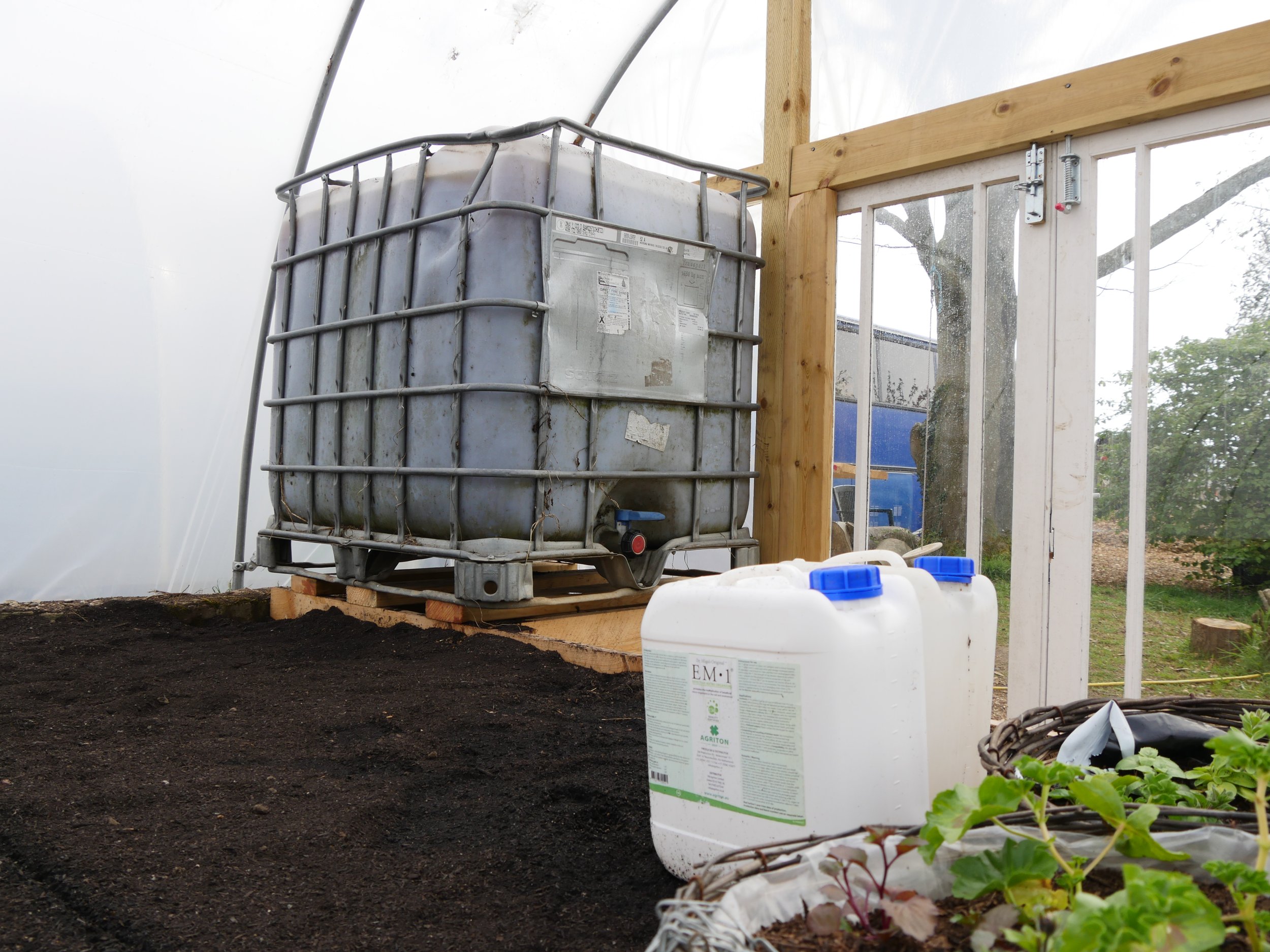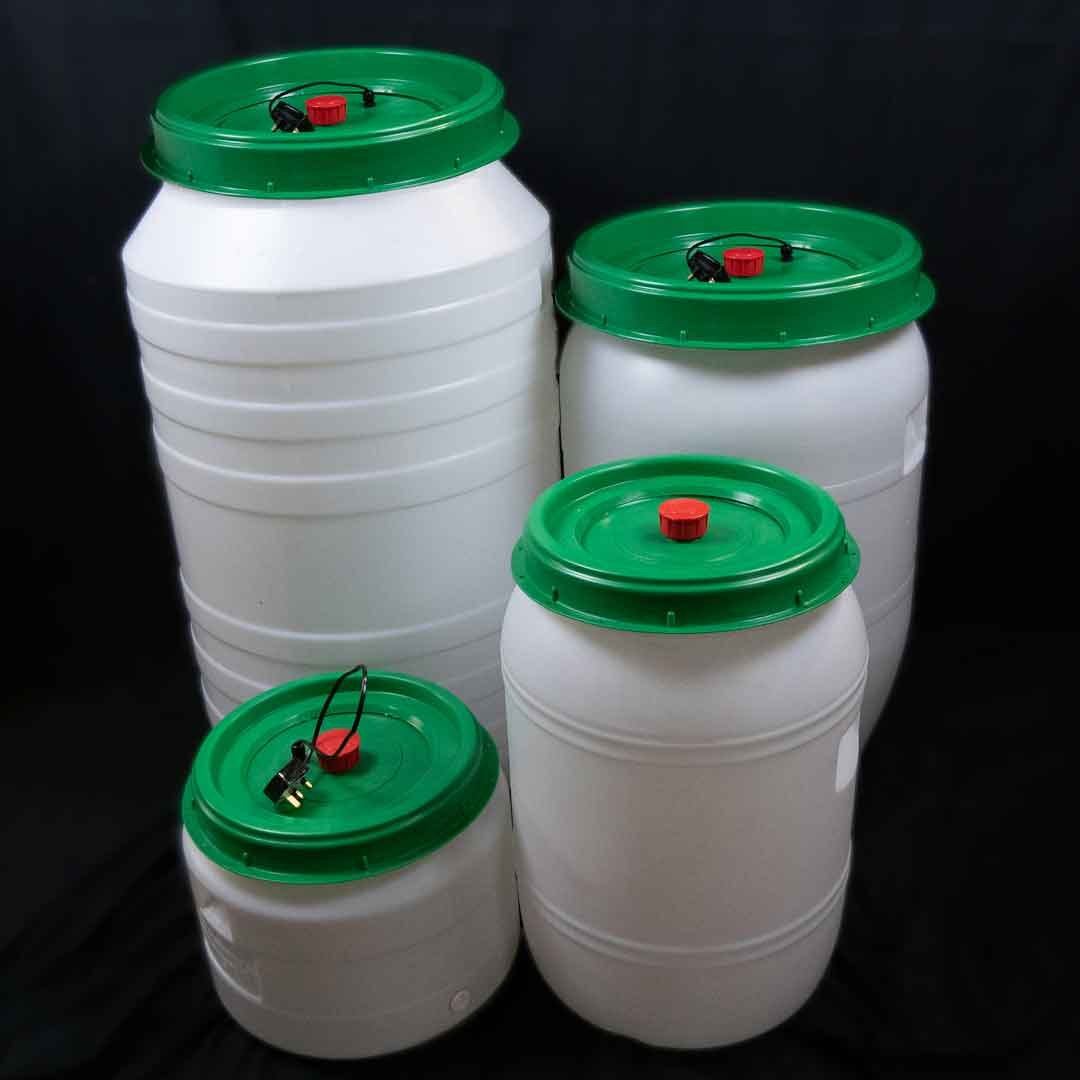How to Brew Your Own 60L EM-1 Mix This Autumn
As the UK moves into the cooler, wetter days of October, it’s the perfect time to get your Effective Microorganisms (EM-A) brew going. Whether you’re making bokashi, improving compost, or feeding soil microbes before winter, brewing your own EM-A gives you a fresh, active culture ready for use across your garden, farm, or compost system.
Here’s your step-by-step guide to making a 60L brew at home — ideal for smallholdings, gardens, or community compost setups.
🧪 Ingredients (1:1:18 ratio for 60L batch)
Water (non-chlorinated): 54L (warmed to 25–27°C)
🔸 Tip: If using tap water, leave it to stand for 24 hours or aerate it to remove chlorine before use.
⚙️ Equipment Checklist
Heater (32°C max is fine for autumn brewing)
Long stir paddle
Thermometer
pH meter or strips (range 2.5–7)
Airlock
🍶 Brewing Steps
Clean & Prep
Rinse the fermenter and tools with hot water — avoid bleach or antibacterial soaps that could harm your microbes.Dechlorinate & Warm Water
Warm the water to 25–27°C, ideal for autumn conditions.Dissolve Molasses
Mix 3L molasses with ~10L warm water until smooth. This helps it blend easily and prevents sticking.Combine & Mix
Pour the molasses solution into your fermenter. Add the rest of the warm water, then 3L EM-1. Stir gently to combine without splashing.Seal & Maintain Temperature
Fit the lid tightly and attach the airlock. Keep the fermenter somewhere warm and dark (around 25–32°C).Your heater’s 32°C limit is perfect — fermentation may just take a few days longer in cooler weather.
Ferment (Anaerobic Process)
Let it brew for 7–14 days.
Avoid opening the lid too often — this is an oxygen-free fermentation.
👃 Daily Quick Checks
Spend 15 seconds each day checking:
Gas: Slight pressure or swelling = good sign.
Smell: Should be sweet-sour or “apple-cider-like”. Avoid sharp, rotten, or solvent odours.
Temperature: Stay near your target of 25–30°C.
💡 Already using EM-A? Try Actiferm — it’s pre-brewed and ready to activate soil life instantly.
✅ When It’s Ready (Day 6 Onward)
pH: Ideal range 3.2–3.6 (anything below 3.8 works).
Smell: Pleasantly sour and slightly sweet.
Visuals: Bubbles or a thin white film (kahm yeast) are normal — stir back in gently.
Green or black mould? Discard and start fresh.
🧴 Finishing & Storage
Once the brew passes the smell and pH tests:
Decant into airtight bottles, filled to the brim.
Store cool and dark (shed or cupboard).
Shelf life: 90 days unopened, 60 days after opening.
⚠️ Troubleshooting Tips
pH still above 3.8 after 10–12 days?
Add 1–2% more EM-1, stir gently, and re-seal.Bad smell?
Likely oxygen contamination — sanitize and start again.Foam or white film?
Totally normal. Keep it sealed and anaerobic.
🌿 Why Brew EM-A in Autumn?
October’s mild temperatures and lower light make it ideal for brewing microbial inoculants before winter. By having a batch ready, you can:
Kickstart compost piles before the cold slows them down
Spray soils and leaves to build resilience
Ferment bokashi waste efficiently indoors
Brewing your own EM-A now means your microbes are active and ready for spring planting.


